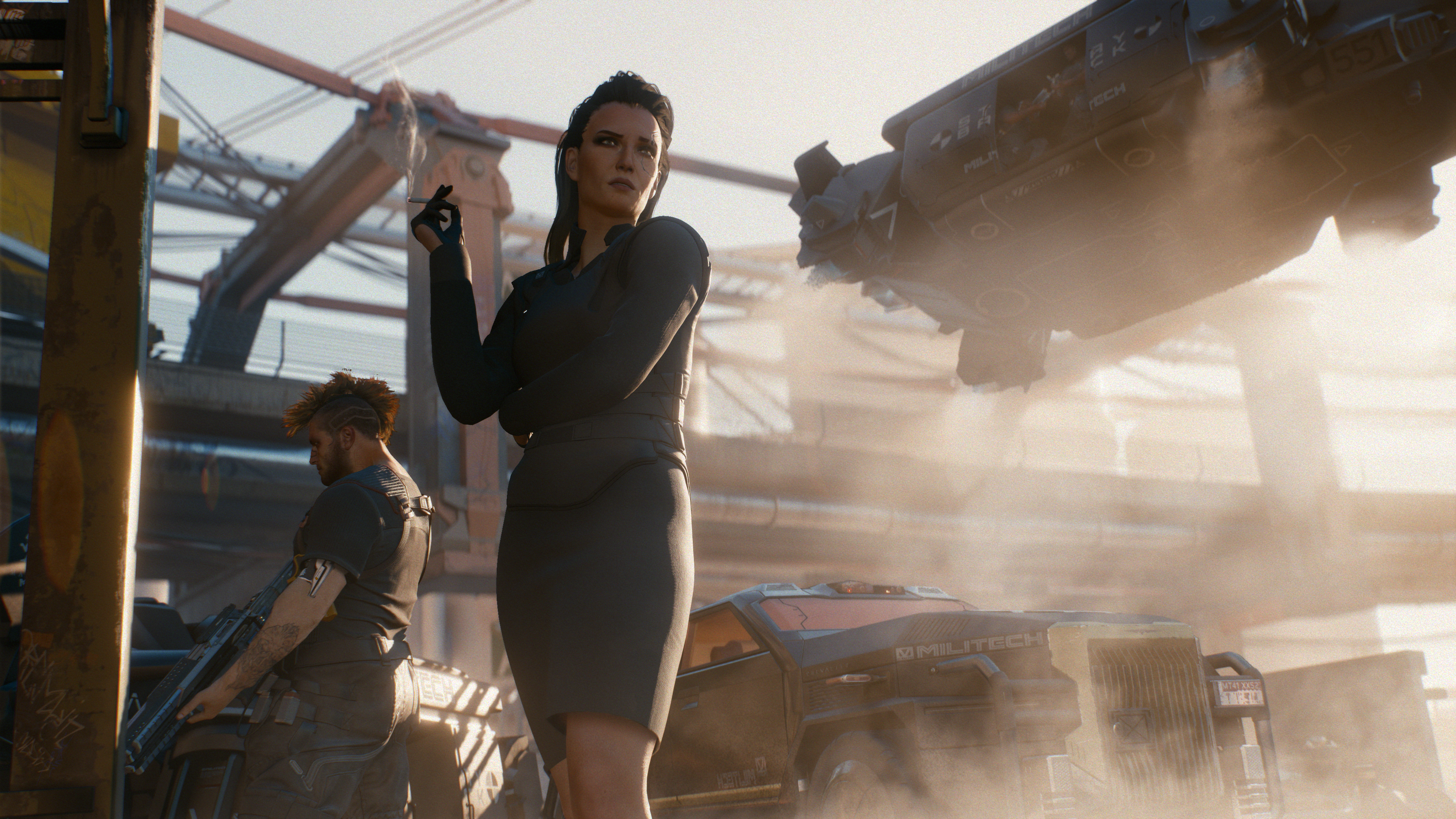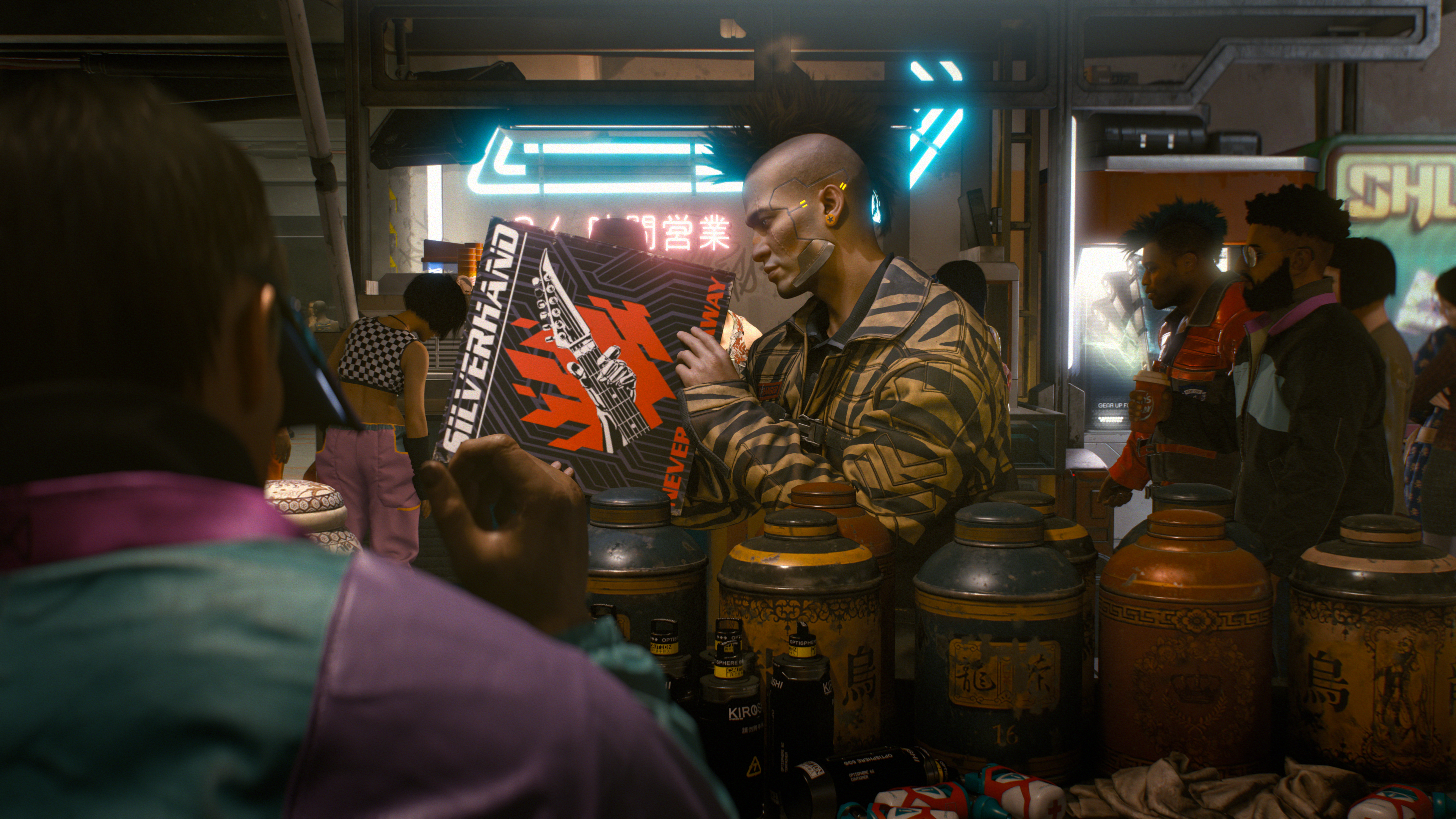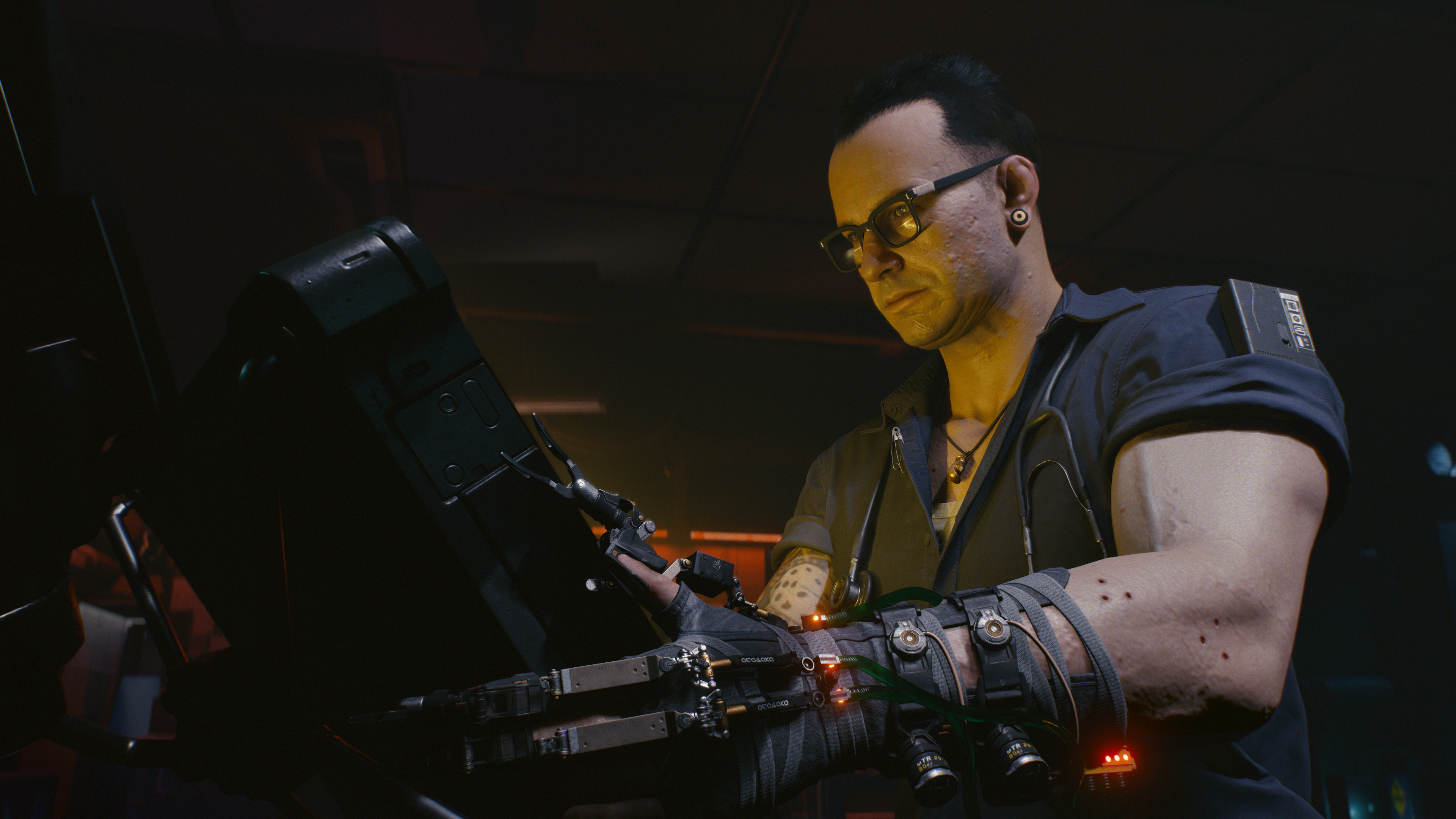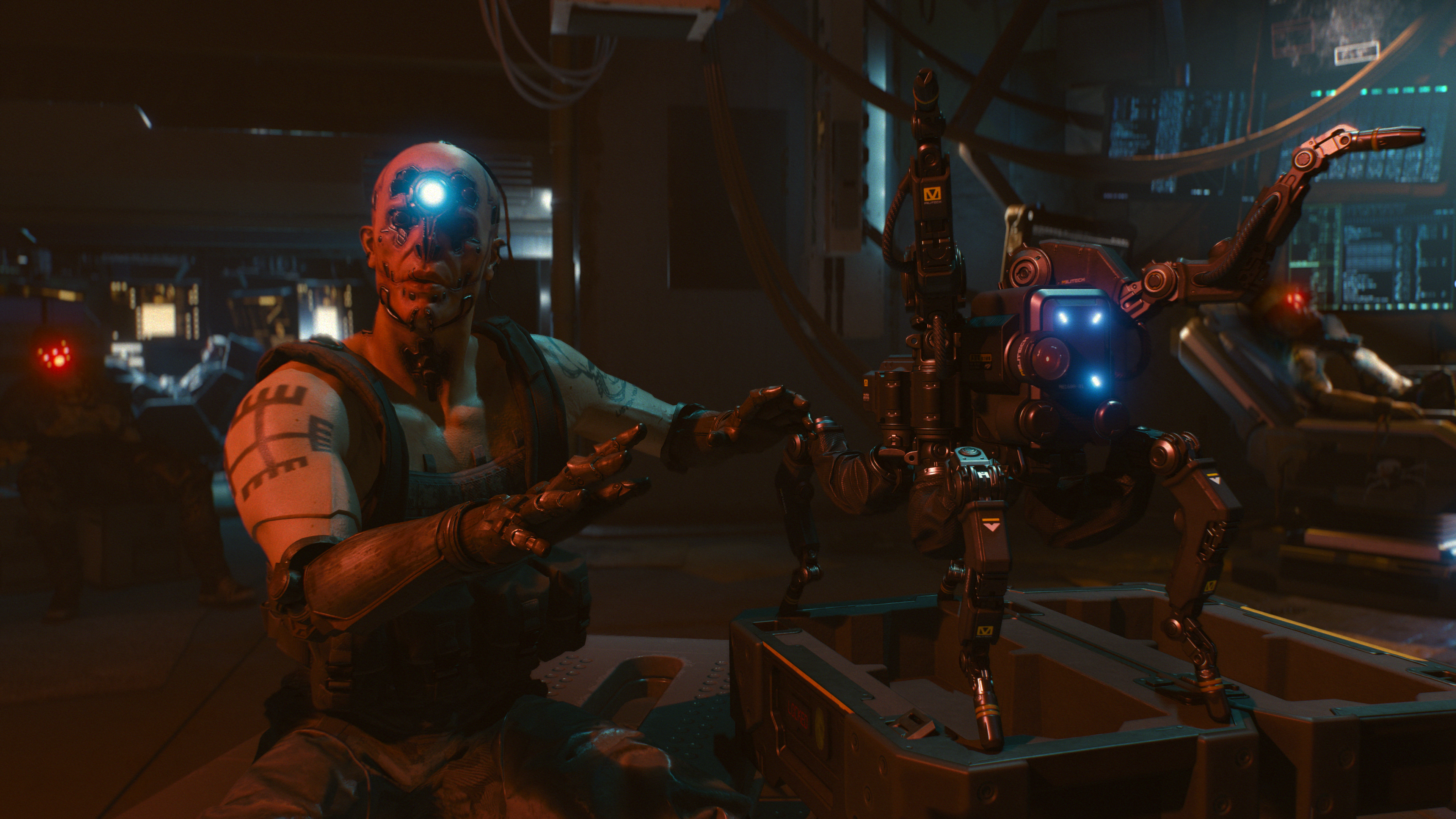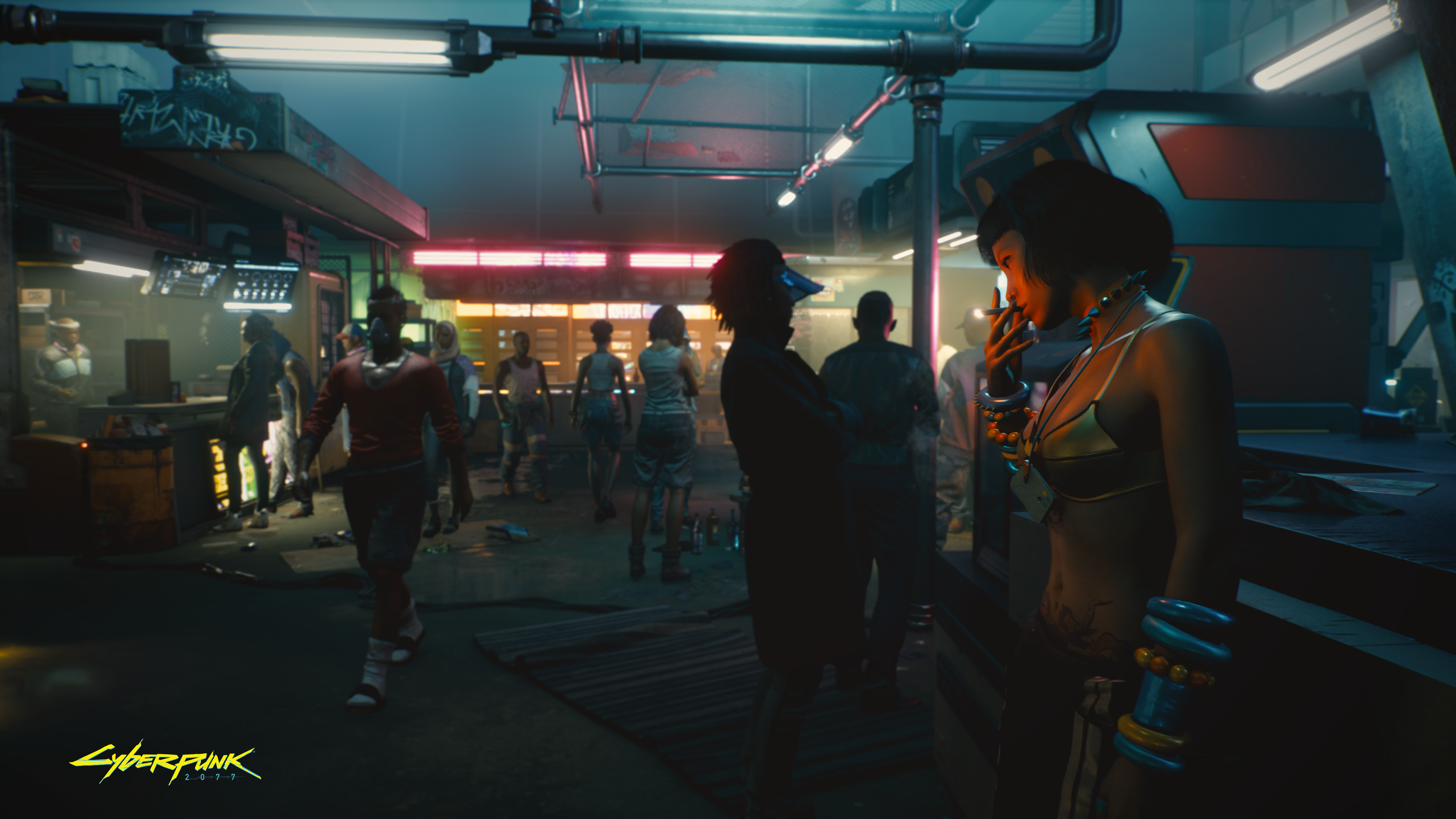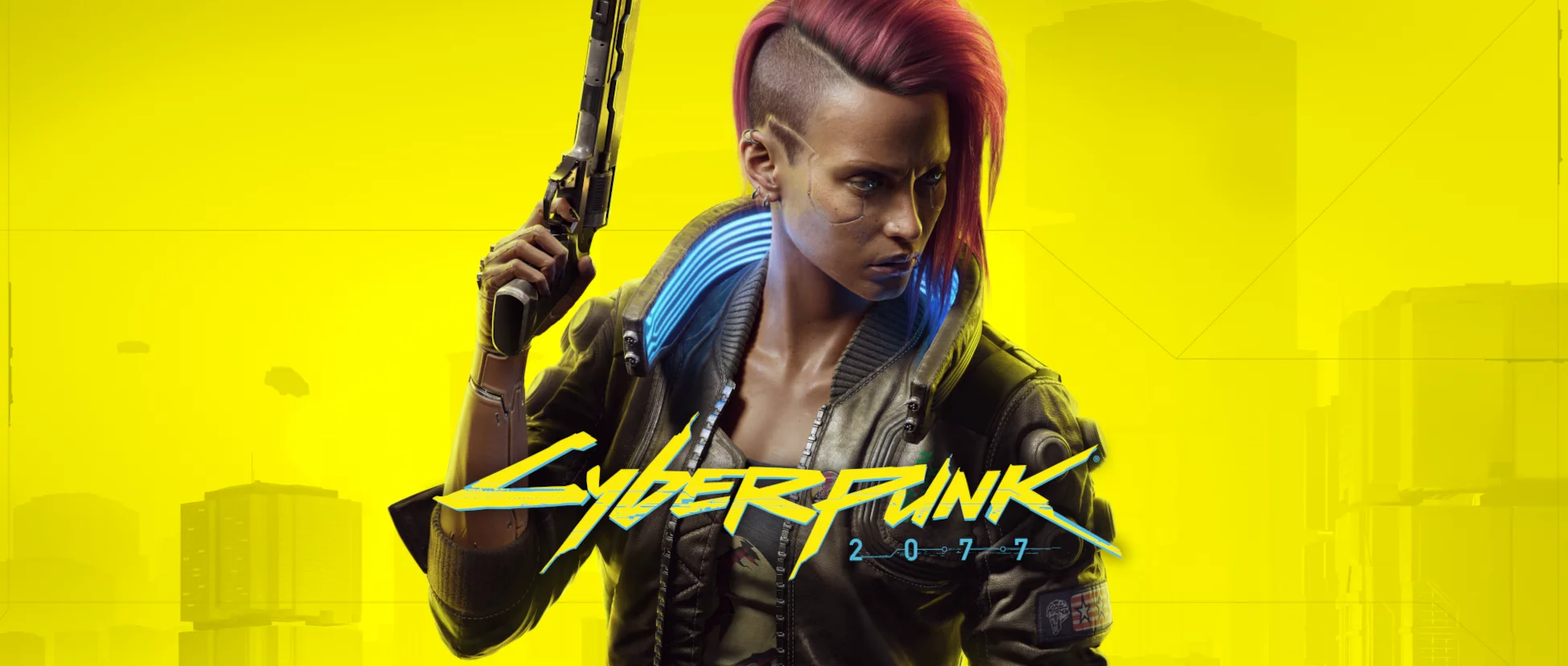In 2012, I had already hung up my bag of ridiculous-sided dice and retired my character sheets back into the draw of stuff, but from the moment CD Projekt Red announced Cyberpunk 2077 was in development, I knew I was going to own it. Based on Mike Pondsmith’s popular tabletop role playing game Cyberpunk 2020, was a game I researched but never had the chance to play, but with a video game on the way, I knew that it wouldn’t be a long wait…
…
…
Eight years later in 2020, Cyberpunk 2077 finally released, and you may have read the horror stories about how unfinished the game was at launch. However, a year to the day since the hooha that prompted numerous PR statements, videos and a corporate apology, and after three substantial patches, I take a look at Cyberpunk in its current state.
At A Glance
| Scores | |
| Visuals | 8/10 |
| Sound | 10/10 |
| Gameplay | 8/10 |
| Overall | 8/10 |
| Positives | + Huge open world + Engaging narrative + Breathtaking performance by Keanu Reeves |
| Negatives | – Main story is surprisingly short – Unstable on PS4/Xbox One – God mode activated way too early |
| Price | £49.99 |
| Our Playtime | 106 hours 05 minutes |
| Available On | PS5, Xbox Series X|S, PC, |
Cyberpunk 2077 is an open world RPG that gives a bleak commentary on a world that runs purely on consumerism and privatisation. Set somewhere in California USA, Night City is a fictionalised amalgamation of Downtown LA and Tokyo and is a place where governments are in the pockets of the corporations and it’s citizens are kept in line with endless advertising, gang warfare and the promise of a fulfilled sex life. (Sound familiar?) It’s in this world I met V, a peppy young upstart who is trying to make a name for themselves in the underworld by taking on the biggest corp of them all – Arasaka.
But before the experience of Night City is thrust onto the screen, Cyberpunk 2077 has the obligatory character customisation schtick and designing V’s appearance, including tattoos, cybernetic implants, gender, and genital size. This has no bearing on how NPCs interact with you, in fact the only options that have any say on how the story is affected are linked to gender and voice as these open up specific, optional, romance options, as well as the different obscenities enemies will shout at you during various battles.
What does matter is deciding V’s background with three options to choose from; Nomad, Street Kid or a Corpo. Each option has subtle changes throughout the game; playing through as a Nomad opened up conversation trees that made it easier to relate to people whereas the Street Kid is able to defuse tensions between gangs. The Corpo option was the most interesting to me, as people are more hesitant around a suit, but V uses a negotiation style of conversation which results in more information being gleaned. There’s no right or wrong path to choose and the result and endings of Cyberpunk are roughly the same, but there is enough of a difference to encourage multiple playthroughs. It’s interesting to see how the situations unfold and how the characters have different levels of trust for V, and it was fun trying to navigate the missions with a different mindset.
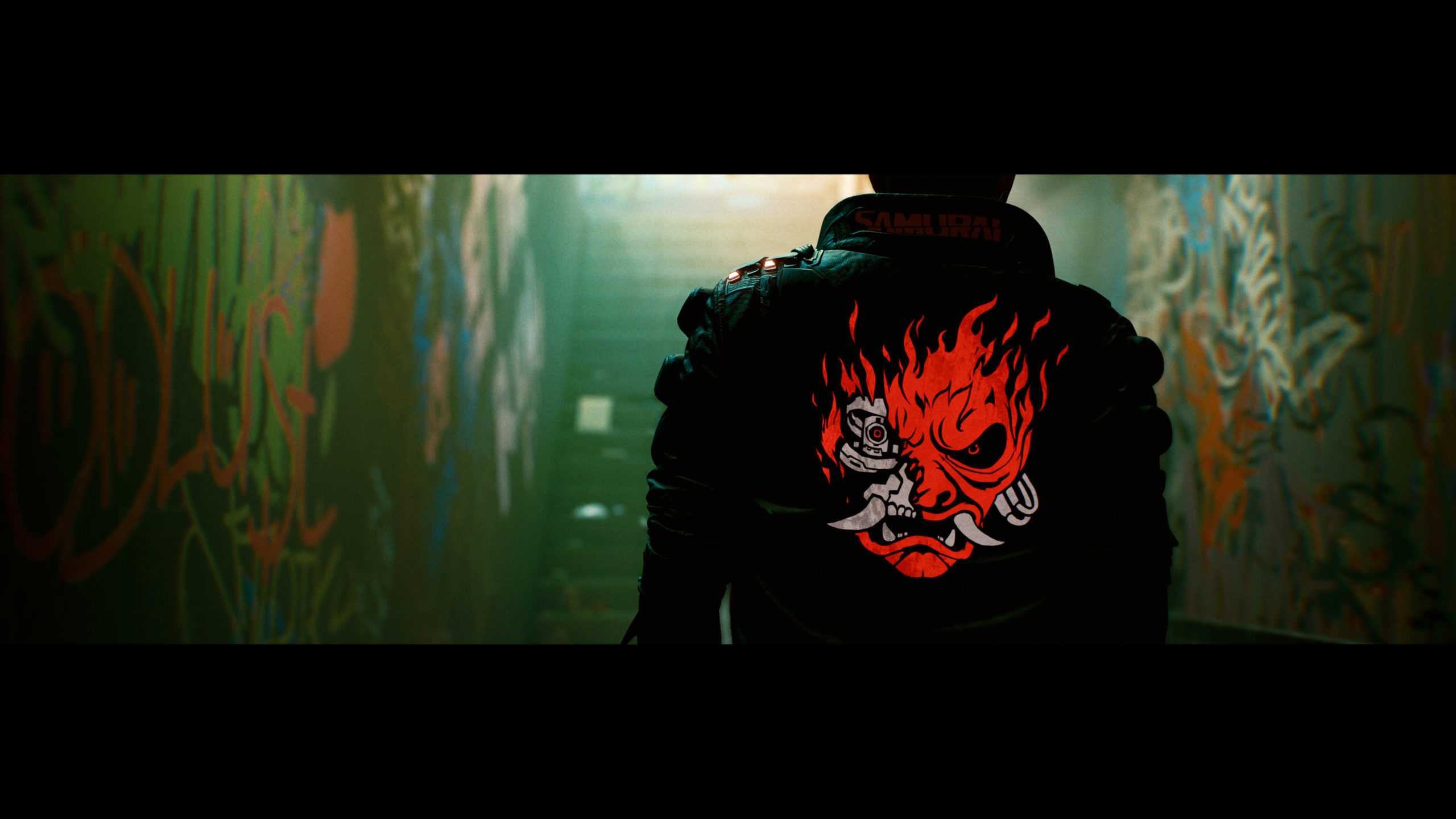
Once the lifestyle choices were decided, it was time for V to take on the Corpo Rats (a less offensive term than the one used in game), and the target was Arasaka. The ‘where’, ‘why’ and ‘who’ of the mission is made clear from the outset, and V and their partner in crime, Jackie Wells, set off on a simple heist that promptly goes south. This introduction acts as a tutorial to get to grips with what can be done and during this time V is taught the ins and outs of the weapons and hacks at their disposal, as well as ‘braindances’, a type of VR simulation that is projected directly into V’s head that allows for free roaming espionage. Everything comes thick and fast and is a little overwhelming. I prefer a more traditional approach where upgrades and new skills are found throughout the game, instead of everything and the kitchen sink is thrown at me. It wouldn’t be so bad if the skills are regularly used, but in the case of the aforementioned braindance, this only applies a few times throughout the game, which led to more time remembering how to look for clues than actually searching.
Once the barrage of information has subsided, the rest of the world opens up and V can choose to either complete the main game, or forgo that in favour of the side jobs from one the city’s many ‘fixers’; gang leaders who need a handyman to clean up the city, no questions asked. The main plot revolving around Corpo greed and V is relatively short for an RPG this size, probably sitting around the 18 hour mark. Despite all of Night City’s rich history and backstory around the prolific use of consumerism to distract from the major terrors the corporations are causing, it’s arguably the weakest part of Cyberpunk. V is effectively railroaded from one situation to another, taking it all in their stride before it finally comes to the inevitable, and despite multiple endings, predictable conclusion(s).
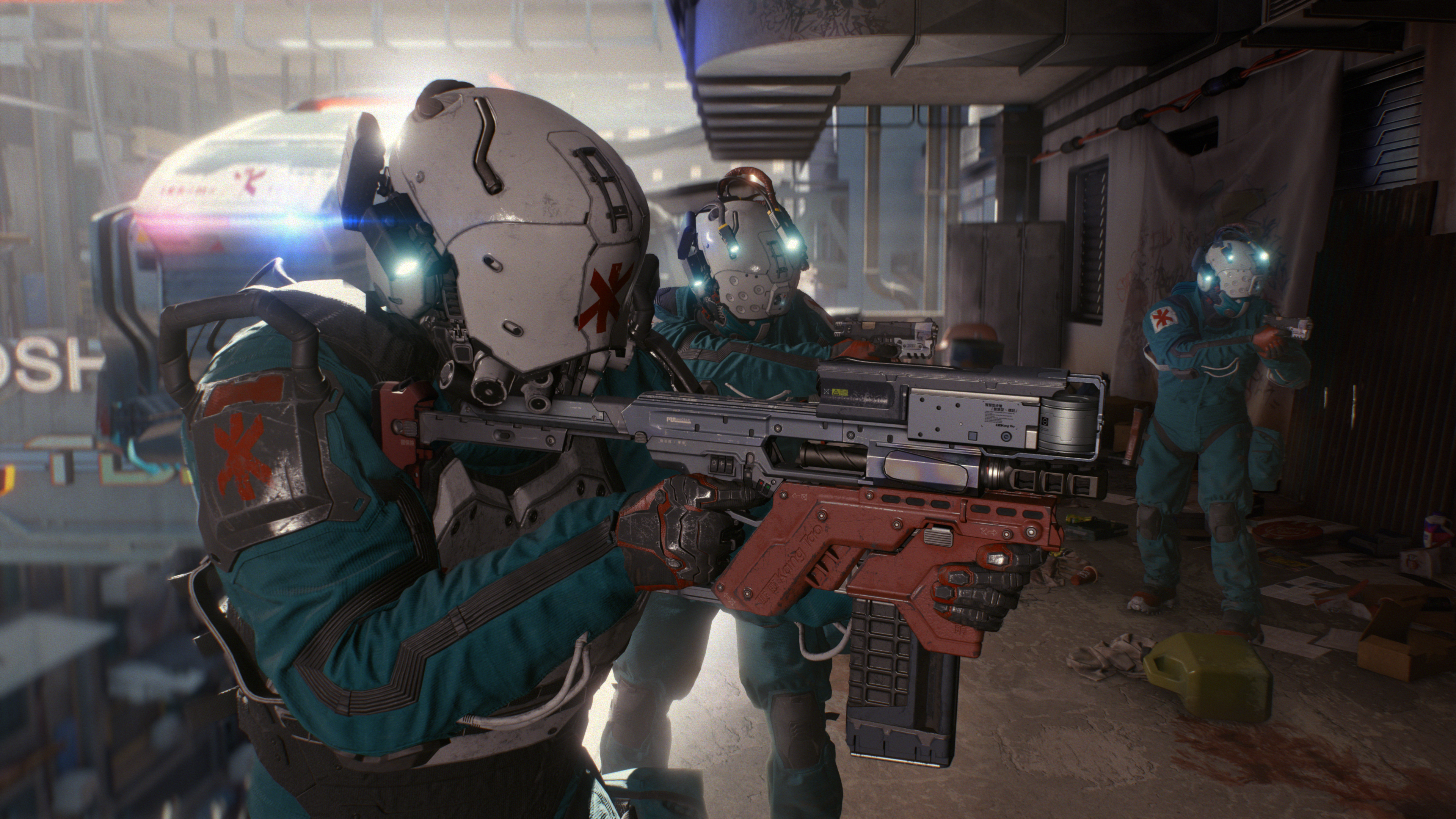
On the strength of the main story alone, Cyberpunk 2077 would be disappointing but the side quests are where Cyberpunk really comes to life, and where V spends most of their time. Missions are varied, ranging from stopping a crime in progress to assisting a journalist understand a mental condition known as cyberpsychosis. Little blue icons litter the map are the key to enjoying the game, and it’s not all serious gangster business either. While there is a fair amount of violence, some of the most memorable parts of Cyberpunk are the little touches like driving a man to the doctor, or talking to a random monk.
Exploring Night City in this way helps V to level up and gain skills in the various actions they undertake, and much like any open world RPG, it’s the typical level up system where perks are given for completing certain actions, such as hacking various outlets or using blades in combat. The downside is that V can quickly become overpowered, as I found myself being able to dispatch enemies through walls and not even having to enter buildings, which resulted in the tight combat becoming stale. This happened so fast that I ended up creating my own challenges to ramp up the difficulty, such as dressing in my finest birthday suit with only a large phallic toy as my weapon.
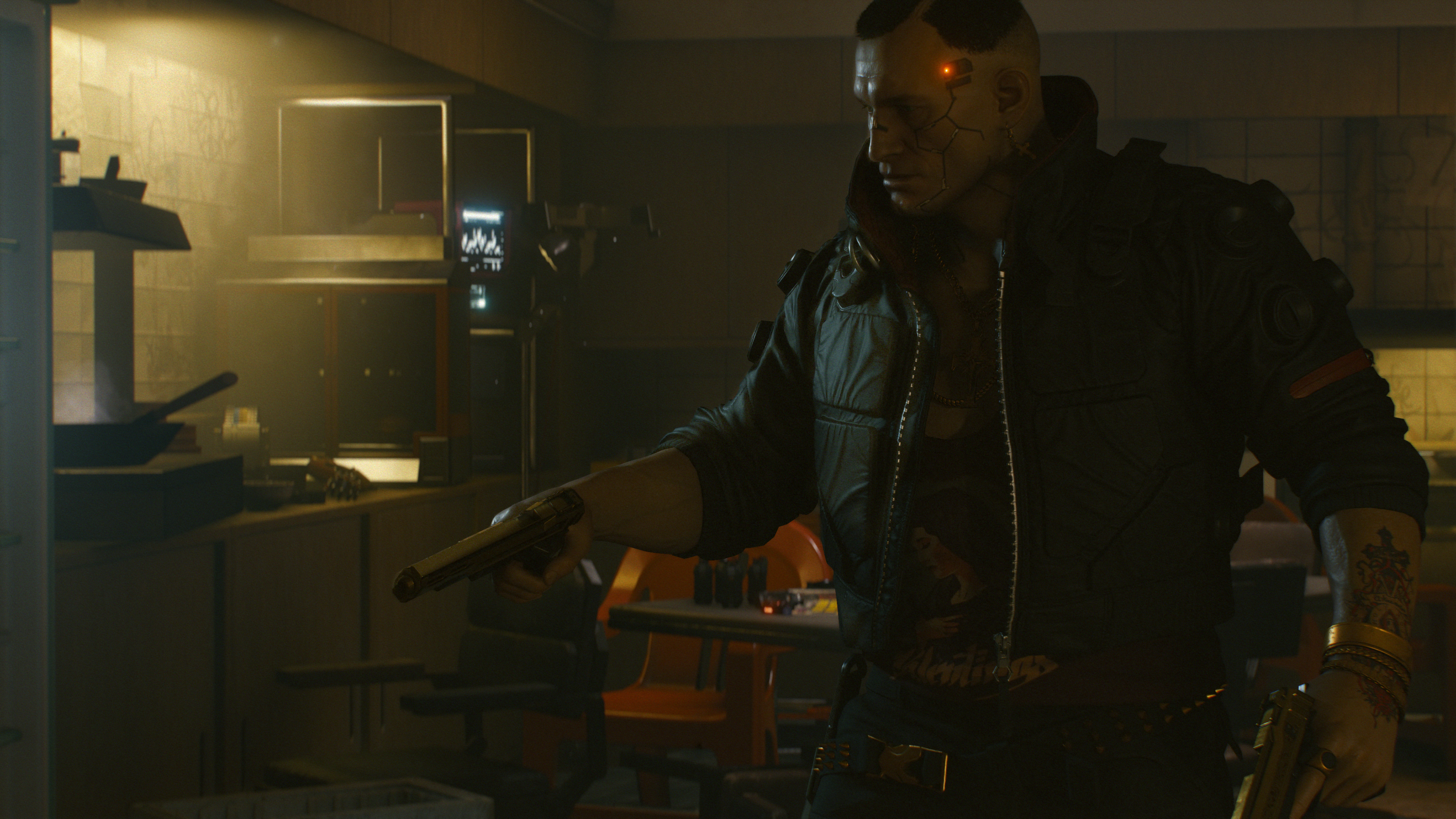
While the excitement of combat wore off, the plethora of supporting characters that V encounters kept my interest piqued. This is where romance and strong bonds can form, from the ageing rockstar Kerry Eurodyne or nomad Panam Palmer, who appear in the main quest, are given a share of the limelight. More exotic characters who you meet as a direct consequence of completing a simple side mission, such as Lizzy Wizzy, a singer who has had so many implants, I’m not even sure she has real skin, give the game a real depth that can easily be overlooked. If these options are fully explored, it does affect how the game ultimately concludes so it is a benefit to attempt some of these missions.
The key character of the piece is Johnny Silverhand, the lead singer of notorious rock band Samurai, and local terrorist, not only played by and with the likeness of Keanu Reeves, but fully motioncapped by the actor himself. I assumed he’d only be present as a cameo to give the game star power but boy was I wrong. From the moment V meets Silverhand at a dump, he completely steals the show. Reeves isn’t here for five minutes and a paycheque, he’s the real deal. His performance might be full of words I’d never say to my mum, but contains dialogue with a lot of depth and heart behind it and made me truly believe that his cause was just.
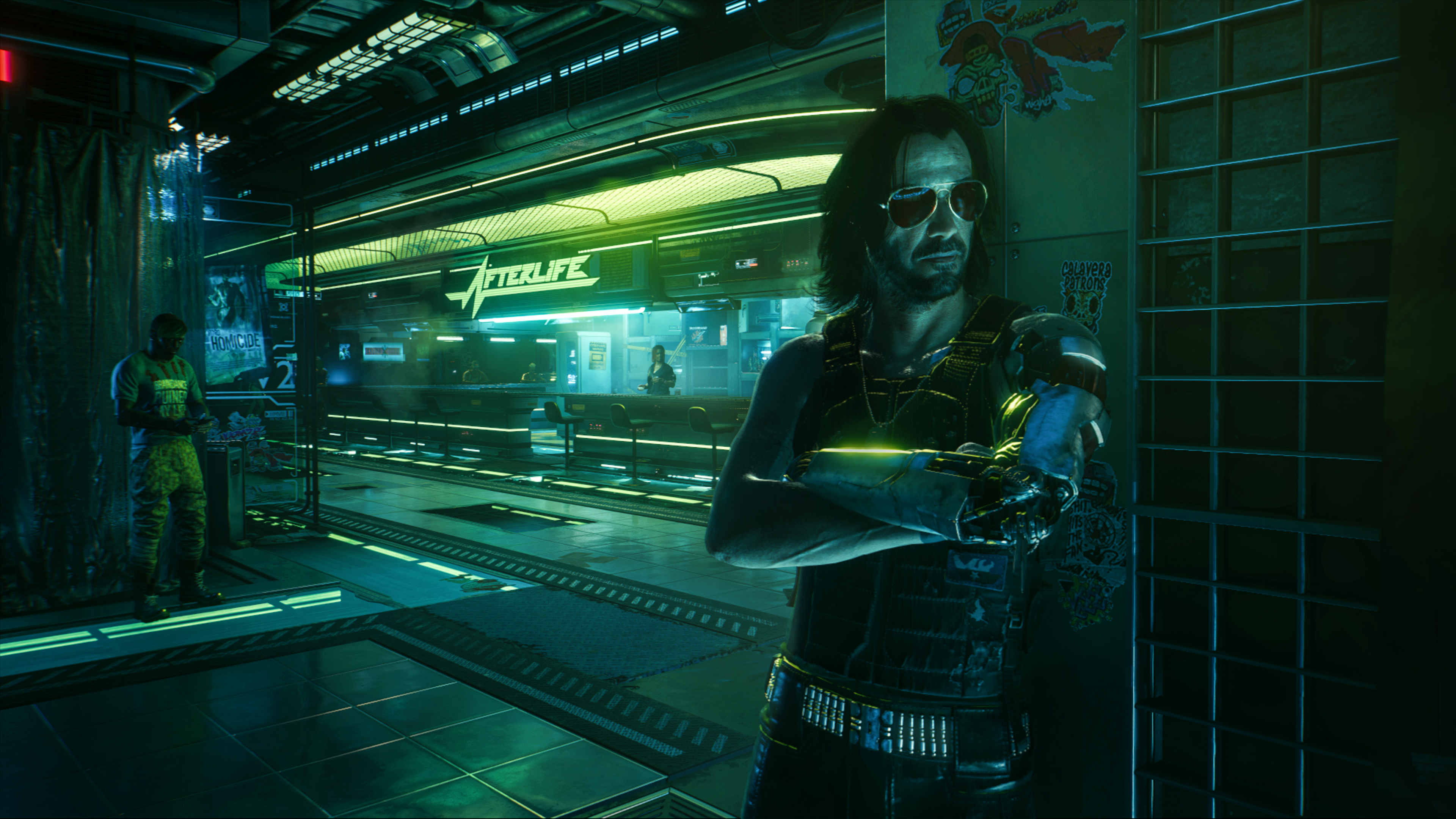
Johnny isn’t only an influence on how V conducts business in Night City; you’ll hear his band Samurai throughout the game’s soundtrack too. Not voiced by Reeves himself, the performance is left to Swedish hardcore punk band, Refused, who stomp out fast and frenetic tracks ensuring the punk scene is still alive in 50 years time. The rest of the soundtrack is equally enthralling. Driving around Night City, listening to the different radio stations, I was met with a look at the future of music – RnB, hardcore rap, death metal, and even jazz were all catered for and with each artist being credited under pseudonyms, it gave Night City a more authentic feel. Along with the truly diverse soundtrack comes a musical score from Marcin Przybyłowicz, who also arranged CD Projeckt’s last game, The Witcher 3: Wild Hunt. Joining him are P. T. Adamczyk and Paul Leonard-Morgan, who drew inspiration from 1990s rave culture to produce exhilarating industrial-techno beats that are the perfect accompaniment to V’s hacking and shooting shenanigans. The music is a true highlight of Cyberpunk, perfectly encapsulating Night City’s diverse areas and even after 100+ hours, it managed to stay fresh and firmly rooted in my mind for weeks after.
Cyberpunk 2077 also ticks a lot of boxes in the looks department as Night City sprawls out in front of V, filled with huge mega-towers full of people as they busy about their lives. Areas of poverty and wealth are connected by a snaking multilayered road system and much like a city in the real world, the different areas give off very different vibes. The main Corpo plaza is rich, with glass skyscrapers and black marble blocks, and futuristic projected fish swimming above the suited people below. There are less affluent areas too, such as Pacifica, a planned holiday area akin to Los Angeles’ Santa Monica that was sent into disrepair after the funding was pulled part way through development. The dilapidated section of the city is where most of the city’s homeless and gangs can be found, usually at the abandoned fun fair or a mall that looks like it comes straight from a George Romero zombie feature. The map is absolutely gigantic and varied, and with the omission of a volcano, certainly packs a lot of environments for you to seek out. Although, I did come across a noticeable number of repeating NPCs and seeing the same character model, in exactly the same outfit walk by for the fifth time in less than a minute raised an eyebrow.
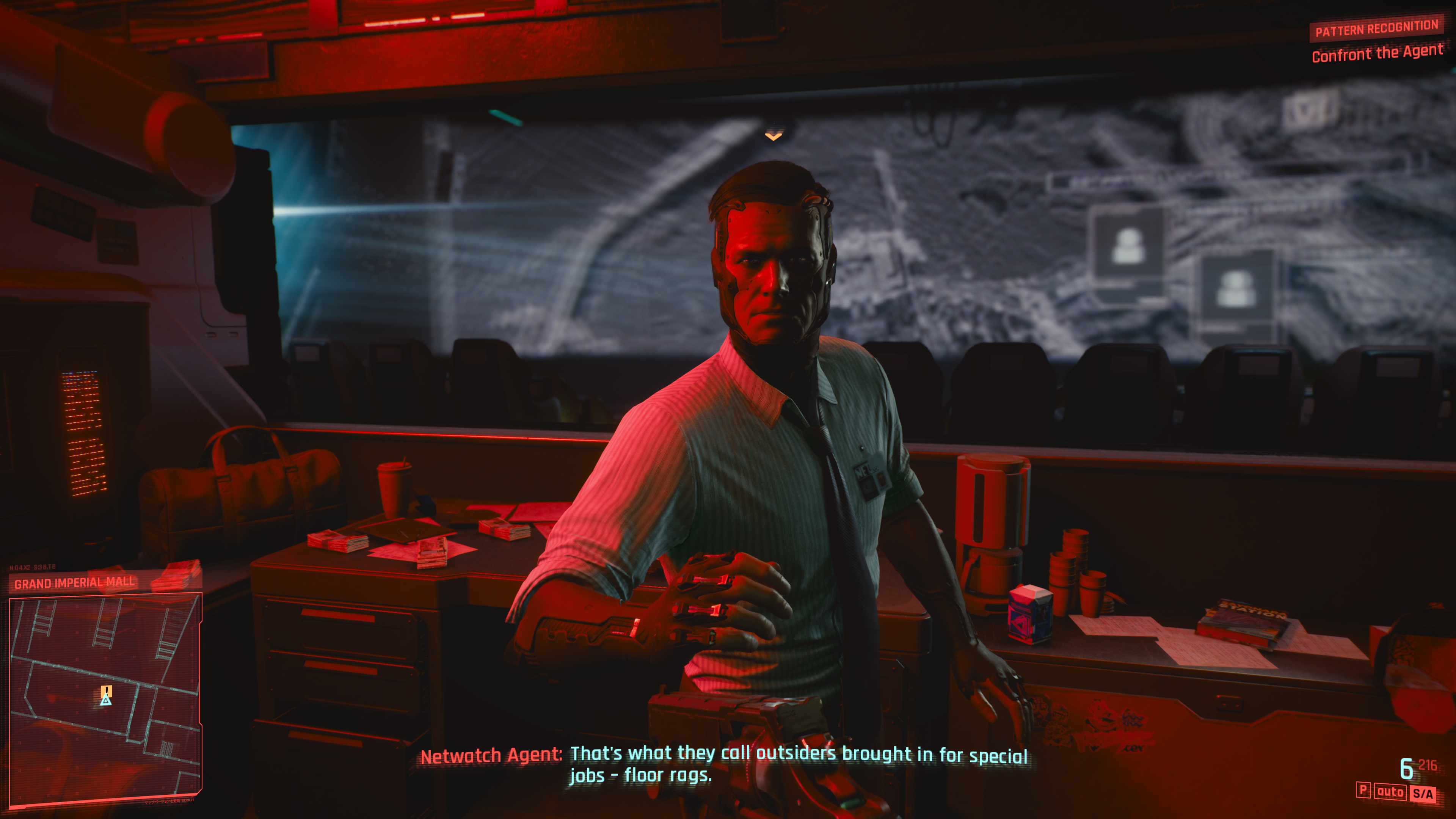
Unfortunately, as impressive as it is, the fact remains Cyberpunk 2077 was released too soon and on hardware that can’t cope with it, and even a year since release is still facing problems. If you can, I’d steer clear of putting the game into your PS4 or Xbox One – it’s simply not worth the hassle. After three large patches I still suffered lengthy load times, multiple crashes back to the console’s menu and assets not acting correctly, with cars often disappearing through buildings. Not to mention the consoles fan running louder than a jet plane.Playing through the game on the PS5 is like night and day however; load times were reduced significantly, cars didn’t vanish into buildings and, most importantly, the disc drive was silent. There are still a few crashes that appear once every two or three hours into a session, and there are still a few other kinks to work out too. Driving on a motorbike and suddenly being thrown into space was a spectacular highlight but these major glitches were few and far between; most of the time the worst I encountered was loot being clipped into the floor so I couldn’t pick it up.
Ironically, the corporate decision to release a game about greed is what has given Cyberpunk 2077 a bad name; the console versions were simply released far too soon and while experiences will vary, I insist on playing Cyberpunk 2077 on either the latest consoles or at the very least a PS4 Pro / Xbox One X. I shouldn’t have to recommend this as it is unacceptable for a console game to need newer hardware to simply work. For a Triple-A, multinational team to rely on people upgrading their hardware to accommodate their game, is simply not on in the console landscape. Not everyone is in a position to upgrade their hardware on a whim and by releasing a broken game that has had eight years of build up, it is ultimately a disappointing decision.
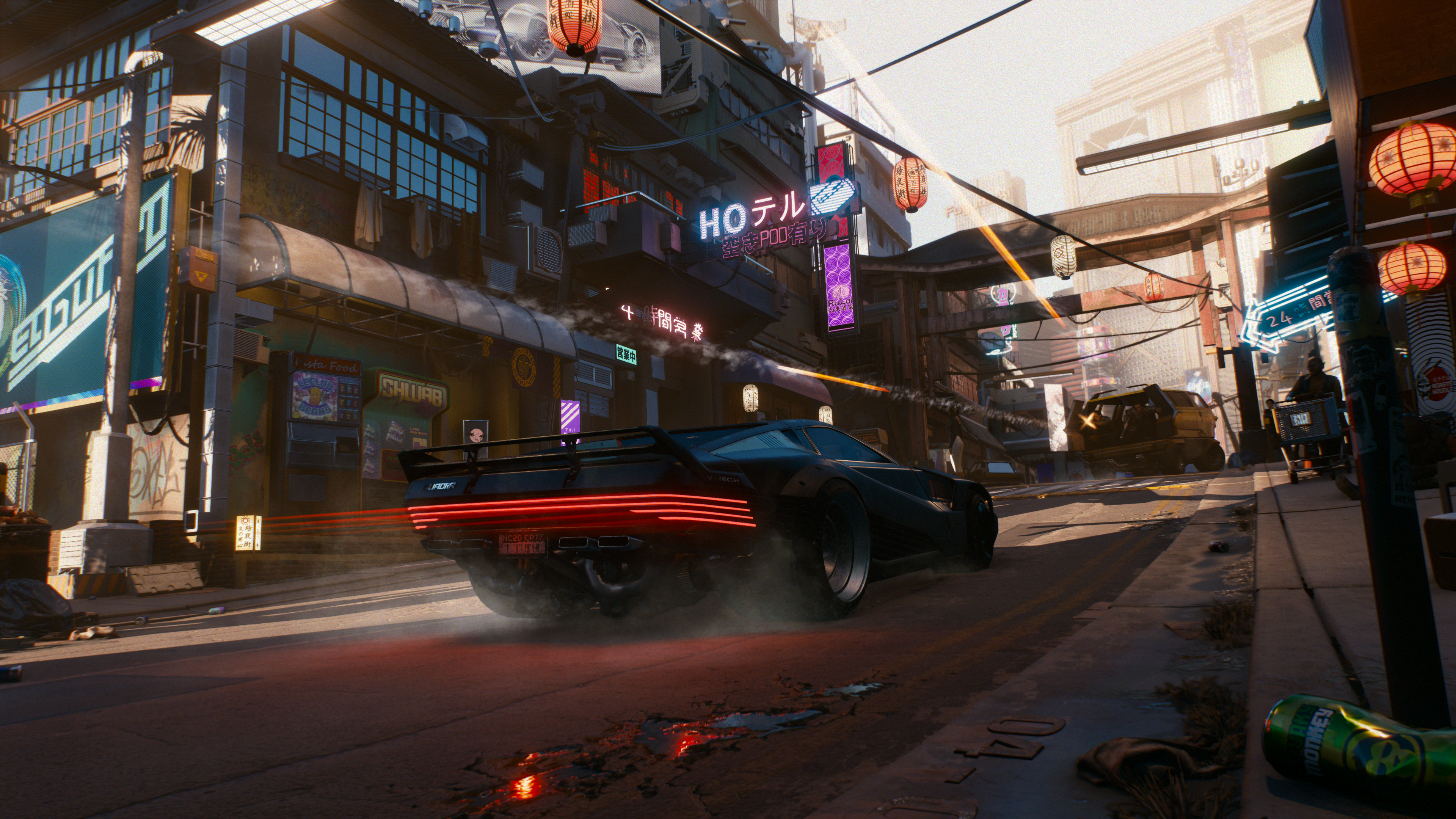
Putting all of the bad business decisions to one side, we are left with a great game that I urge people to experience and, a year since release, most of the main bugs have been cleaned up. The main story is on the short side and feels rushed, and once levelled up to a certain point, everything becomes a little too easy. The side missions are where the fun resides and taking time to explore the huge open world, getting to know the history of the city and the key inhabitants is the most rewarding quality about Cyberpunk 2077. The whole piece showcases a gritty life in the underworld with over the top violence but also eases the tone with moments of utterly insane fetch quests. Cyberpunk 2077 might have taken a year to get to a decent state but has been one of the most fun games I’ve played in the last 12 months, warts and all.
